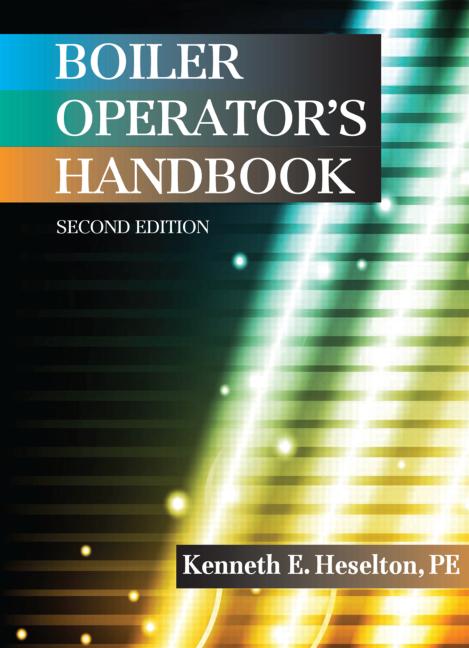
Figure
1. Indoor
wood-fired hydronic boiler. (Photo courtesy of Greenwood Clean
Energy.)
From the virtues of various fuel types to options for designing your biomass boiler system, consider this the nuts and bolts - the chips and pellets? - of an increasingly popular strategy as it ranges from district steam to radiant floors.
The terms green, LEED®, and sustainable design have become ones that you hear every day. A green revolution is truly underway in the construction industry, and with momentum, more owners have begun to consider biomass energy, and specifically biomass boilers.
Most people will think of a wood-fired boiler when hearing the term biomass boiler; however, biomass boilers can be designed and used for burning animal- and plant-derived material.
Biomass energy is any organic matter derived from living or recently living organisms that can be burned and used as a source of fuel. Biomass can be used as a potential energy source, since it stores solar energy in the form of carbon. Plants absorb carbon from the atmosphere as carbon dioxide during photosynthesis, which is a process that converts carbon dioxide into organic compounds using the energy from sunlight. Animals eat the plants, converting them into into animal biomass.
When you first learn about biomass energy, you might question why burning plant matter is a green energy solution. The major difference between fossil fuels and biomass is time. Just like biomass, fossil fuels such as gas, oil, and coal also contain of carbon of various amounts. Fossil fuels, however, captured carbon dioxide from the atmosphere millions of years ago, whereas biomass fuels obtained their carbon dioxide from the atmosphere recently while growing.
Burning fossil and biomass fuels both return carbon to the atmosphere; however, fossil fuels return carbon sequestered millions of years ago, thereby leading to a more rapid increase in concentrations of carbon dioxide, a greenhouse gas, into the atmosphere. A greenhouse gas absorbs the infrared radiation emitted from the Earth, which prevents its loss into space. The greater the quantity of greenhouse gas in our atmosphere, the warmer our planet may become since this infrared radiation is trapped. The increase of carbon dioxide concentrations in our atmosphere is associated with global warming.
Biomass can be managed sustainably since replanting new growth will absorb carbon dioxide from the atmosphere at the same time the previous harvest releases carbon dioxide to the atmosphere. The balancing of carbon dioxide into the atmosphere is why biomass is considered carbon neutral.
Biomass Fuel Types
Although biomass is considered better for the environment than fossil fuels, biomass has lower energy densities so significantly larger amounts are required to generate the same energy as fossil fuels. Biomass boilers can be designed to burn numerous types of fuels, such as wood, crop residue, and corn, as well animal waste and their byproducts.For boilers, the most common types of biomass fuel are wood products, which are the most widely available, and are usually the least expensive. There are numerous types of wood fuel products, including log wood, wood pellets, wood chips, sawdust, and bark. Before installing a biomass boiler, it is important to consider the advantages and disadvantages of each fuel as they vary in cost, availability, and storage space requirements.
Log wood is the oldest form of biomass fuel; people have burned log wood for heating and cooking for thousands of years. Lumber was the largest source of energy in the United States and throughout the world until the mid 1880s, when the need for fuel outstripped the available resources, making the switch to coal necessary. At that time, coal was considered an inferior fuel used only by the lower classes of society. However coal, and then finally oil, with its high heating value and ease of transport, was used to power the ascent of modern civilization.
Log wood has a consistent high heating value and is often inexpensive; however, its economical use depends on the location of the facility requiring power. The biggest issue with log wood is its large size, which makes it difficult to handle requiring labor to restock and reload. Log wood fuel also requires large, dry storage areas.
Wood pellets, because they are a manufactured wood fuel product, have consistently high heating value and moisture content. Pellets are waste wood that would otherwise end up in landfills and are usually manufactured from recycled, compressed, and dried sawdust and wood particles from lumber mills. Wood pellets are less commonly manufactured from waste wood and bark.
As a manufactured product that is condensed and uniform, pellets are easier to handle and require less storage space than most other biomass fuels. The small size also allows the pellets to flow in a manner similar to a liquid facilitating the use of automatic feeding equipment. The manufacturing process makes wood pellets potentially more expensive as well as more difficult to obtain.
Wood chips, unlike wood pellets, are not manufactured and consequently have inconsistent heat values and moisture content. This can lead to unpredictable burn times and sooting of the boiler, resulting in higher maintenance costs. Wood chip boilers tend to be used for larger installations where the lower cost of the fuel can offset the higher maintenance cost. Larger installations can often justify dedicated staff to tend to the cleaning and maintenance of equipment.

Figure
2. Cut-away
view of a wood pellet boiler with automatic feed system. (Photo
courtesy of Froling, distributed in the U.S. by BioHeatUSA.)
There are other fuels for biomass boilers besides wood, including corn and animal waste. Many manufacturers sell corn fuel biomass boilers, as corn is widely available in many parts of the U.S. However, corn is grown seasonally and may be difficult to obtain year round. The heating content of corn is high for its weight and is more consistent than wood. Because each type of wood has unique heating properties, large variations can be found in the heating content, whereas corn is uniform. The small size of corn makes it easy to handle and it can be used with automatic feeding equipment. There has been a drop in the use of corn as a fuel for biomass boilers due to the high demand for corn from the ethanol industry. Corn can also produce clinkers, which are hard masses of improperly burned fuel that can clog parts of the burner and reduce efficiency.
Animal waste is an important fuel used for residential heating and cooking throughout large parts of the developing world, which unfortunately has a detrimental impact on human health. Much of this is due to the way in which it is handled and burned; often indoors, without an adequate pathway for the products of combustion to exit the living space. In the U.S., animal waste is sometimes used in biomass boilers in locations where the quantity of waste created exceeds its need as a fertilizer for crops. Currently, however, there are low-cost disposal options for animal waste.
In the future, if disposal costs continue to rise, so will the use of animal waste for biomass energy. Although the focus of this article is solid fuel biomass boilers, it should be noted that biogas is an important category of biomass fuels. Wastewater treatment facilities and solid waste landfills can provide a continuous source of biogas, which can be used to fuel boilers and CHP plants.
Biomass Boiler Types
Just as there are numerous types of fuels for biomass boilers, there are a wide variety of biomass boiler types, configurations, and capacities. Biomass boilers can be ordered with output capacities as small as 100 MBtuh to as large as 60,000 MBtuh. However, most biomass boilers are manufactured for residential applications and are smaller than 300 MBtuh output.Residential applications are more popular and economical due to the smaller quantity of biomass fuel that needs to be shipped, stored, and consequently loaded into the boiler. Boilers can be constructed for both indoor and outdoor use, with the outdoor boilers being the most widely produced since the boiler and fuel source can be co-located.
Solid fuel is delivered by truck to a site where it is typically unloaded directly to a fuel storage area. The outdoor boiler configuration also facilitates locating them remotely from occupied buildings, which is important due to the smoke generated by the solid fuel appliance. Biomass boilers can be constructed as either open or closed hydronic systems. Most biomass boilers are built as open systems, allowing them to be constructed to different standards than a pressurized heating appliance. An advantage to an open system is that it can operate safer than a pressurized boiler, while a disadvantage is that they can be prone to corrosion, rust, and mineral buildup since the water is subjected to air. An open system typically requires a heat exchanger in order to tie the biomass boiler into the building’s closed loop heating water system.
Biomass boilers are available as hybrids, allowing them to burn solid biomass fuels as well as fossil fuels such as fuel oil, natural gas, and propane. This allows the boiler to operate and produce heat even if the biomass fuel is not restocked due to lack of available biomass supply or failure to reload. Biomass boilers can also be configured with self-feeding features such as integral storage bins as well as conveyors and traveling stokers for semi- and fully automatic operation. Biomass boilers can be used for heating domestic water by the addition of a heat exchanger located near the domestic hot water heater. Biomass boiler manufacturers also market towards snow melting and radiant floor heating applications.
Conclusion
There are numerous advantages for using biomass boilers. The most important advantage is that biomass is considered a green renewable source of energy. Biomass fuels are usually less expensive and more stable in price than fossil fuels and can reduce the overall energy cost for a facility. There are, however, disadvantages in using biomass boilers, such as the quantity of smoke that is produced, which has caused local communities to ban their use.Biomass boilers also require space to store fuel, usually resulting in the need to site large sheds or bins as well as space to allow delivery trucks to maneuver. Biomass boilers may also require additional maintenance staff to restock fuel. Finally, biomass boilers generate ash, so boiler cleanout needs to be performed regularly. With the continuing interest in green and sustainable projects, more owners have started to consider biomass energy and biomass boilers. It is clear that biomass boilers provide a green and renewable solution for energy, but there are numerous items to think about and discuss with the owner before implementing a biomass boiler project.ES
Founded in 1998, Advanced Engineering Consultants (AEC) provides a wide variety of mechanical and electrical engineering services to support the commercial, industrial and institutional facilities sectors. AEC is a minority owned firm committed to offering the latest in sustainable design practices. For more information, visit the company website atwww.aecmep.com.


